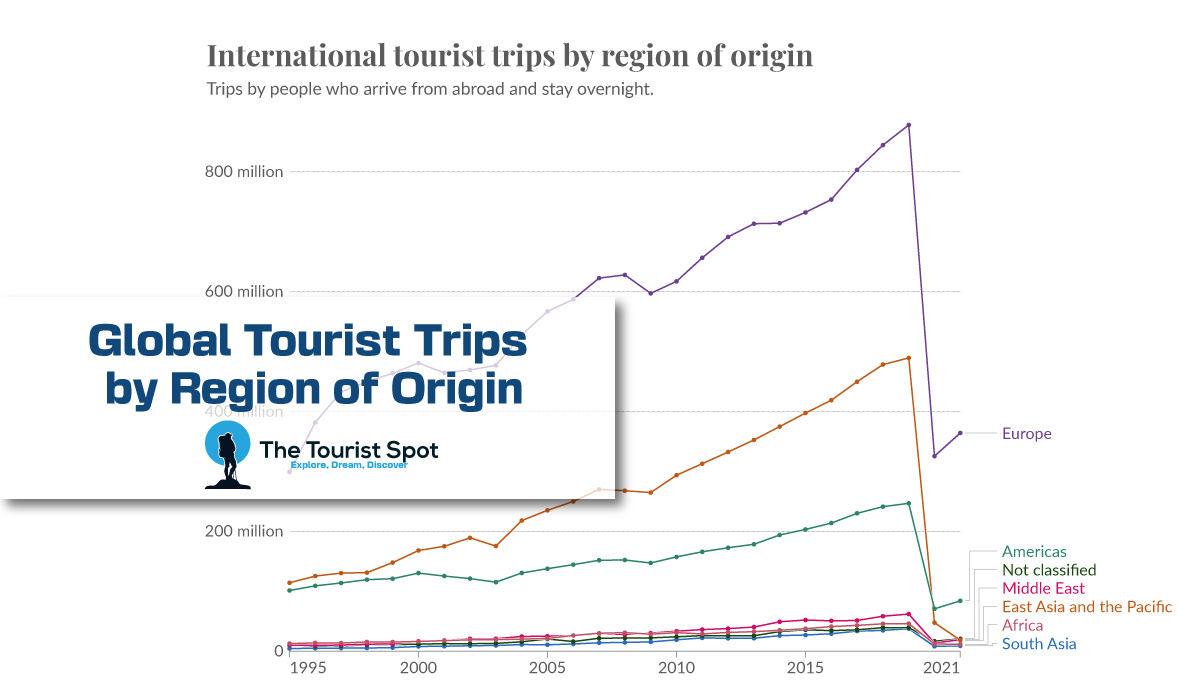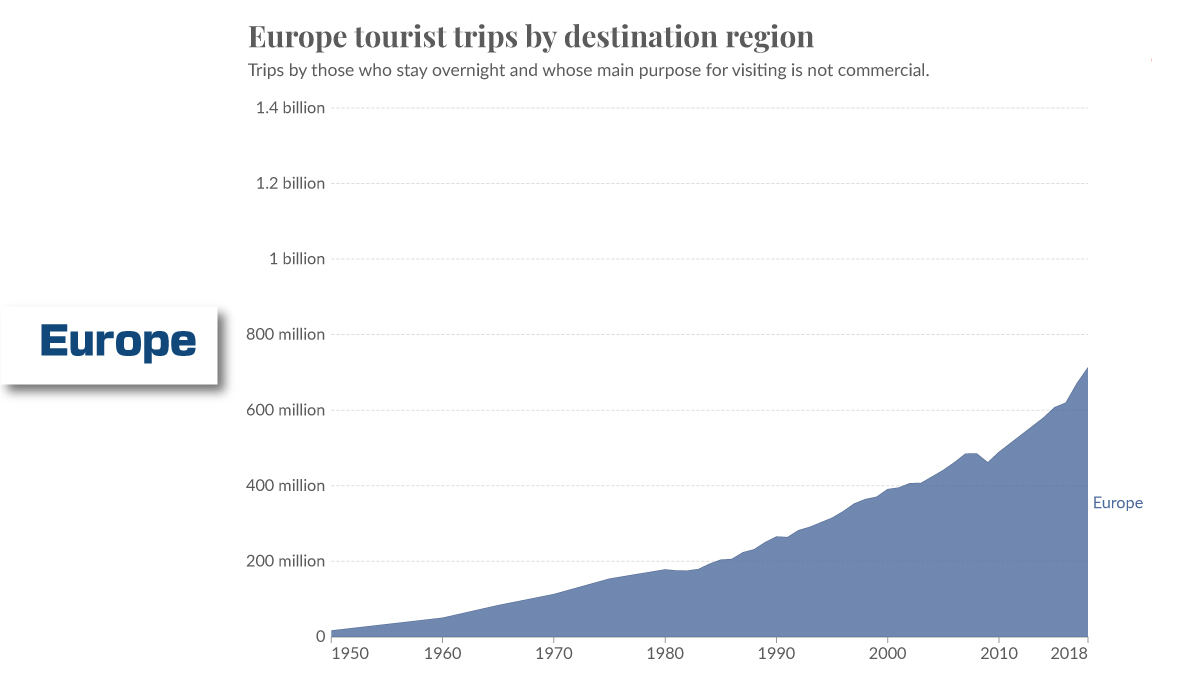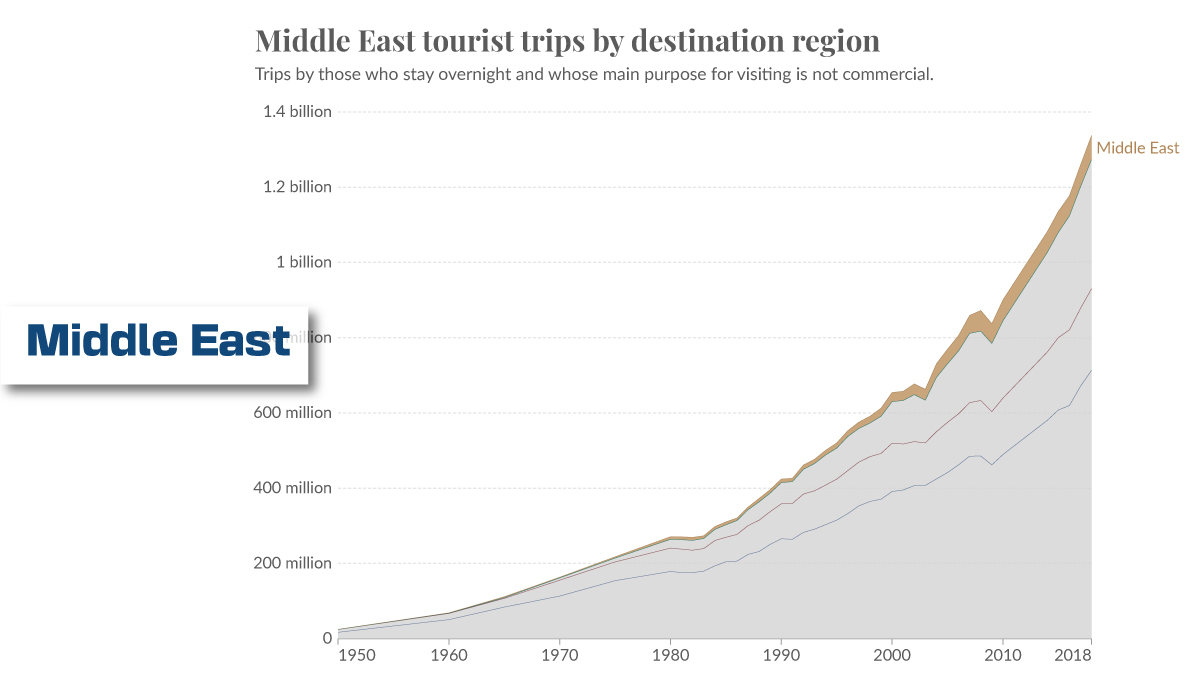Global tourist trips by region of origin
by tourist

Explore the world with our comprehensive guide to global tourist trips. Discover top destinations, travel tips, and insider insights for an unforgettable journey
Tourism regions have emerged since the Industrial Revolution as cities grew, pollution increased, and middle-class families gained disposable incomes. Some are centered on natural features such as Niagara Falls or on places of religious pilgrimage.
Tourism data are obtained from a variety of sources including administrative records (police, immigration, border surveys) and accommodation surveys.
Table of Contents
ToggleEurope
Europe is home to more international tourist arrivals than any other continent. It stretches from the shivering Arctic Ocean in the north to the pleasantly warm Mediterranean Sea in the south, and is a trove of historic sites, world-renowned cuisine, cosmopolitan cities, nature, relaxation, art, and cultural experiences.
The tourism industry in Europe is bouncing back strongly following the pandemic, and is expected to reach 2019 levels again by 2024 or 2025. Inbound leisure travel is the main driver of this recovery with 14 out of 16 Western European countries forecast to surpass 2019 levels by 2023, led by Spain and France. Leisure travel is the most common reason for trip making across all European markets, with sun and beach, visiting friends or family, city break, culture, adventure/sport, gastronomical and cruise trips being the next most popular types of holiday.

Domestic trips within Western Europe remain very popular and are a key source market for local tour operators. The majority of domestic trips are made by leisure travelers, with families forming the largest segment of this group. In addition, more and more people are adding leisure components to business trips, a trend known as ‘bleisure’, which can be targeted by tourism businesses with specific product offerings such as family-friendly holidays or luxury breaks.
Outbound tourist trips from Europe are also recovering well, and Germany is one of the fastest growing countries for this type of travel. The German market is open to tourism suppliers from around the globe and there is a clear preference for exotic destinations as well as exciting, transformative and nature-based experiences.
Other popular outbound destinations from Europe are Asia and Africa, where the market is more mature. The Middle East is another important source market for outbound tourists, and has also recovered quickly from the pandemic. Its thriving economies and strong connectivity to Europe have helped fuel this growth, as have its proximity to major European gateways. In addition, a comparatively low cost of living and travel makes the Middle East a competitive option for budget conscious travelers.
Asia
The largest continent in the world, Asia gets a massive number of tourists — almost half of all trips are to this region. It’s also an incredibly diverse destination with everything from desert ruins and modern mega-malls in the Middle East to giant mountains and magnificent ancient monuments in South Asia and the beach bungalows and jungle treks of Southeast Asia to the technology capitals of East Asia.
The most popular travel destinations in Asia are mainly cities, with Hong Kong, Bangkok and Singapore among the top city travel destinations. But the continent is also home to beautiful natural scenery, from the emerald blue waters of Ha Long Bay to the vast rainforests of Borneo. It’s a spiritual destination, too, with many of the world’s great religions represented in incredible religious architecture such as Angkor Wat and Borobudur, and with the many palaces and temples that showcase the splendor of past dynasties, including Seoul’s Gyeongbokgung Palace and Beijing’s Forbidden City.
Asia is a generally safe travel destination but political tensions do exist, especially in North Korea and the restive provinces of Tibet and Xinjiang in China. In addition, some parts of the region can get very cold, so be sure to check local conditions before travelling to places like Mongolia or Siberia. Internet connectivity is good in most of the region, although some countries such as China and North Korea impose heavy censorship.
The hard-hit Asia-Pacific tourism industry is recovering well after the COVID-19 pandemic, with most countries now open to visitors again. But the rebound is unlikely to reach pre-pandemic levels without a stronger return of travelers from China, which was the world’s biggest outbound travel market before the pandemic. The good news is that the easing of restrictions and successful vaccination campaigns are making it easier for Chinese travelers to visit again, and there’s likely plenty of pent-up demand to absorb. The recovery in tourism from this important source is already helping to ease the pressure on other destinations that suffered in their absence. This is helping to reduce the negative impacts of localized shocks on tourism, such as terrorist attacks and political events.
Africa
In the 1800s, European travelers making what was then known as the Grand Tour began extending their journey to Africa. This trend continued throughout the 1900s, as Africa became a popular destination for those looking to experience its exotic cultures and natural wonders. Today, the continent still draws a large number of tourists from Europe. However, a number of challenges have impeded the growth and development of tourism in many African countries. These include infrastructure underdevelopment, lack of direct flights, inadequate marketing and investment budgets, and portrayal of Africa as a land of war, disease, poverty, hunger, and despair in foreign mainstream media.
The vast majority of international tourist trips to Africa are leisure. Although the number of leisure trips to Egypt was deeply impacted by COVID-19 restrictions during 2020 and 2021, travel to the country rebounded in 2023. Other popular destinations in this region include Morocco and Tunisia. These nations were able to increase leisure trips by offering more attractive packages. In addition, they have implemented measures to welcome more visitors and transform their destinations into sustainable destinations.
Ecotourism is the fastest growing sector in Africa, as more travelers are interested in visiting locations that have minimal impact on the environment. For example, wildlife safaris in Kenya and Tanzania allow tourists to view animals in their natural habitats and learn about their conservation status. Similarly, Rwanda is a popular destination for those who want to see mountain gorillas. The country is also home to several coffee tea plantations that offer a ‘Crop to Cup’ experience for tourists.
While the emergence of new destinations in Africa is encouraging, it is important for the region to make its tourism products more appealing to international tourists. This can be done by promoting Africa’s diverse culture, natural beauty, and cultural heritage. In addition, tourism in Africa needs to be promoted as a place where global citizens can participate in social and environmental initiatives such as sustainable development and environmental protection. This can help to increase the number of tourists visiting Africa and create a positive image of the continent as an emerging tourist destination.
Middle East
Many travelers may still see the Middle East as a dangerous or off-limits destination, but this region’s storied past has led to the birth of some of the world’s most important religions. From the ancient ruins of Petra and Jerash in Jordan to the Old City in Jerusalem and the Pyramids of Giza in Egypt, the Middle East is an immense and mystical tableau of how civilization came to be.
As the travel industry has focused on catering to the needs of Chinese tourists, it may have overlooked that Muslim travelers are a significant segment of luxury visitors. These travelers are more likely to spend and travel for longer periods than their counterparts in other markets, and are often highly satisfied with the services provided by hotels and tour companies. It’s a growing market that travel brands should take seriously.

From the iconic skyline of Dubai to the awe-inspiring sand dunes of the Red Sea, the Middle East is a place that inspires and invigorates. Whether you’re getting lost in a labyrinthine bazaar or traversing a lonely desert, this mystical region will leave a lasting impression on you.
One of the top cities to visit in the Middle East is Istanbul, Turkey. This vibrant city has a romantic charm and mystic vibe that enchants every kind of traveler. From honeymoon couples to history buffs, the city offers a rich experience to all. Its iconic monuments, stunning canal view with Asia and Europe on both sides, mouthwatering local cuisine, grand hammams and charming people make it a dreamy travel destination.
Another top travel destination in the Middle East is Erbil, Iraq. This city is home to a large number of ancient palaces, museums, and relics that speak of the illustrious history of this region. It also has an amazing nightlife, delicious food, and gorgeous architecture.
Explore the world with our comprehensive guide to global tourist trips. Discover top destinations, travel tips, and insider insights for an unforgettable journey Tourism regions have emerged since the Industrial Revolution as cities grew, pollution increased, and middle-class families gained disposable incomes. Some are centered on natural features such as Niagara Falls or on places…
